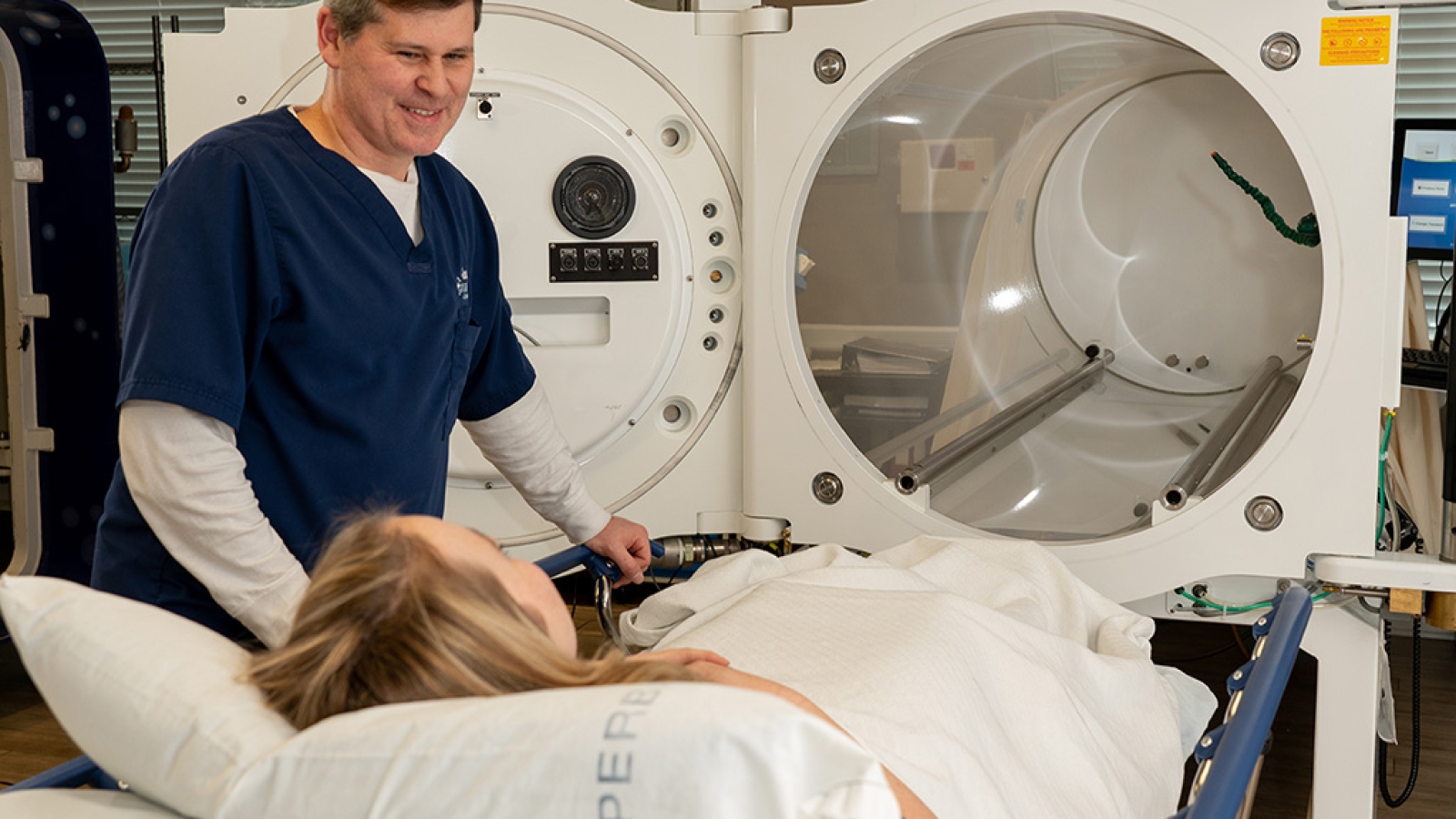For individuals living with diabetes, finding effective management strategies is crucial for maintaining overall health and preventing complications. Hyperbaric Oxygen Therapy (HBOT), traditionally known for treating decompression sickness and wound healing, is now being explored for its potential benefits in diabetes treatment. This blog, presented by Under Pressure Hyperbarics, delves into the role of HBOT in managing and potentially improving diabetic conditions, focusing on how increased oxygen levels can affect blood sugar levels and insulin sensitivity.
The Connection Between HBOT and Diabetes Management
HBOT involves breathing pure oxygen in a pressurized chamber, which significantly increases the amount of oxygen in the blood. This enhanced oxygenation can have several effects on the body that are particularly beneficial for people with diabetes.
Impact of HBOT on Blood Sugar Levels
One of the key areas of interest is the effect of HBOT on blood sugar levels. Enhanced oxygenation can:
- Improve Circulation: Better oxygenation improves circulation, particularly in small blood vessels. Improved circulation can help in more efficient delivery of insulin and glucose to cells, potentially stabilizing blood sugar levels.
- Enhance Wound Healing: For diabetic patients, especially those with foot ulcers, HBOT can accelerate healing by increasing oxygen supply to the affected tissues, reducing the risk of complications like infections or amputations.
HBOT and Insulin Sensitivity
Another potential benefit of HBOT for diabetic patients is the improvement of insulin sensitivity. By enhancing tissue oxygenation, HBOT may help in:
Reducing Inflammation: Chronic inflammation is known to impair insulin sensitivity. The anti-inflammatory effects of HBOT can potentially improve insulin response.
Regenerating Pancreatic Cells: Some studies suggest that HBOT may have regenerative effects on pancreatic cells, which are responsible for insulin production.
Clinical Research and Studies
While the research on HBOT and diabetes is still evolving, some studies have shown promising results:
- Improved Wound Healing: Studies have consistently shown that HBOT can significantly improve healing rates in diabetic foot ulcers.
- Blood Sugar Stabilization: Some research indicates that regular HBOT sessions may help in stabilizing blood sugar levels, though more research is needed in this area.
Considerations for Diabetic Patients
For those considering HBOT as part of their diabetes management plan, it’s important to:
- Consult with Healthcare Providers: Discussing HBOT with a doctor who understands both diabetes and hyperbaric therapy is crucial.
- Monitor Blood Sugar Levels: As with any new treatment, monitoring blood sugar levels before and after HBOT sessions is important.
- Understand the Commitment: HBOT typically requires multiple sessions to be effective, and patients should be prepared for this time commitment.
Conclusion
HBOT presents an exciting frontier in the management of diabetes, offering potential benefits in wound healing, blood sugar stabilization, and insulin sensitivity. At Under Pressure Hyperbarics, we are committed to exploring and providing advanced treatment options like HBOT for individuals with diabetes. As research continues to evolve, HBOT could become an integral part of diabetes management strategies. If you’re interested in learning more about how HBOT can aid in diabetes treatment, we invite you to contact us for more information and to discuss whether this therapy could be right for you.
